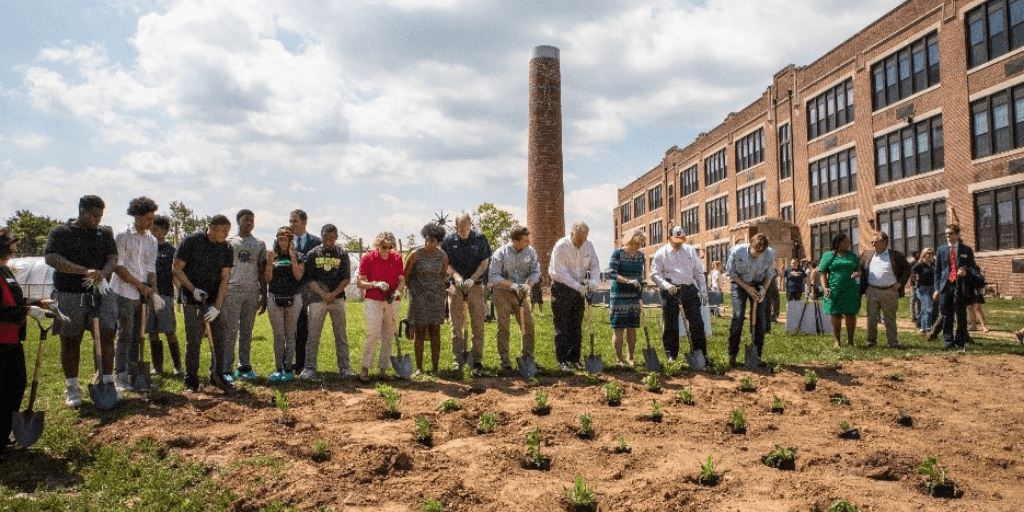We have much more to do and your continued support is needed now more than ever.
Green Street Academy: Where are they now?

In May 2018, National Wildlife Federation and our partners broke ground on our large-scale green infrastructure project at Green Street Academy (GSA), a public charter school in Baltimore City. During Baltimore Wildlife Week in 2018, students, staff, community members, and public servants came together to plant the 5,000 square foot pollinator meadow on the school’s campus. The planting process was arduous, but there was no doubt that the hard day’s labor would pay off. Now, almost a year later, students, teachers, and the community are beginning to see the fruits of their labors materialize.
We caught up with Eric Oberlechner, the Green Street Academy farm manager, to discuss how the pollinator meadow, rain garden, and bioretention area, have been positively affecting the school’s students, staff, and grounds.
From a biodiversity standpoint, Oberlechner has already noticed an obvious improvement. When walking around the grounds, students have observed a higher number of insects and birds. For the first time, the school even had a group of Monarchs trapped in their greenhouse! Oberlechner has also been happy to see an increase in the school farm’s production, which can likely be attributed to the increase in pollinators on the property. He also noted that the stormwater runoff in the parking lot has been much improved, and said the rain garden is working “really well!”

Not only have these installations had great ecological benefit, but they have also inspired teachers and students alike. Teachers are excited to get outside and use the projects as a living, outdoor classroom. Whether they are asking Oberlechner how each installation functions, or helping to clean-up around the stormwater features, the students are enthusiastically engaged around around the unique projects at their school. We had anticipated these benefits to students, but we were pleasantly surprised to hear that the influence of these projects was growing beyond school walls. Oberlechner told us that he had been approached by at least one local community group looking for guidance and expertise for a similar community greening project. These installations have proven to empower the Green Street Academy family in the larger community as well as the school.

A walk around the grounds of Green Street Academy shows the working benefits of this project as demonstrated by the farm’s increased production, the parking lot’s decreased runoff, and teachers’ use of the school grounds for education. A closer look, however, shows that these benefits reach far beyond the school, and have potential to last longer than much of the infrastructure itself. These projects have given the students pride in their conservation effort, and have sparked a passion for community greening. One of Oberlechner’s students even commented that he hopes to one day pursue a career in this type of work.
Reflecting on past projects such as these allows us to examine lessons learned in order to positively impact future projects, but it also serves as a reminder that the benefits of planting a pollinator garden can reverberate throughout a whole community. We all have the power to create habitat and inspire our communities to be better.
If you are interested in improving biodiversity in your own backyard, school, or community check out our Garden for Wildlife page!





















